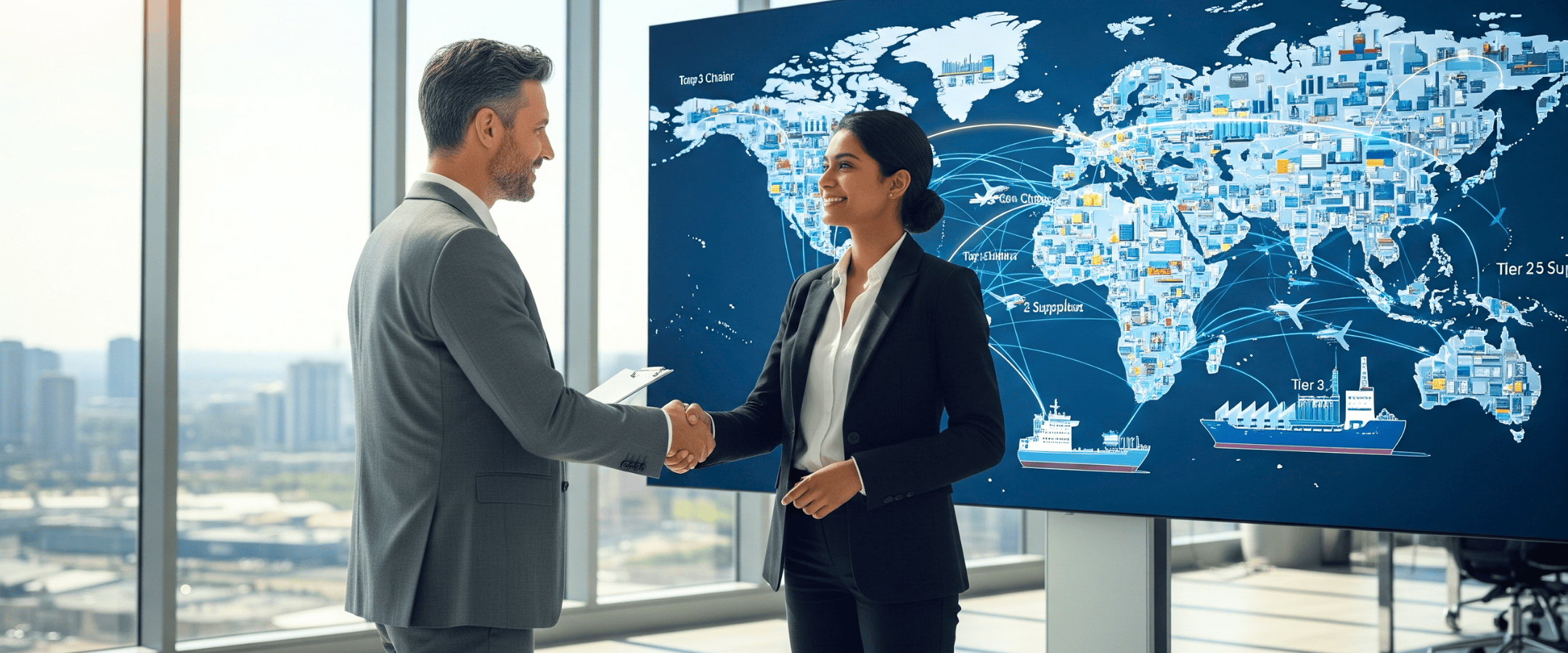
In 2025, resilient supply chains aren’t defined by how fast they run, they’re defined by how quickly they spot and contain hidden disruptions before they flare into full-blown crises.
Let’s talk about the real front line of resilience: Tier 2 and Tier 3 suppliers. These are the firms whose raw materials, subassemblies, or components form the backbone of your products, but whose hiccups too often blindside you.
Here’s a striking figure: a recent Deloitte survey found only 15 % of chief procurement officers have visibility beyond their Tier 1 suppliers. In other words, 85 % of us are flying blind when it comes to the deeper tiers where supply chain disruptions usually originate.
Now, consider this: McKinsey reports that just 2 % of companies can map risks at Tier 3 and beyond. If your Tier 3 vendor faces a power outage, raw material shortage, or geopolitical snag, there’s a good chance you’ll learn about it the hard way, with expedited freight bills or production downtime.
“Visibility” can feel like a buzzword, dashboards of dots and lines that look impressive but leave you wondering,
“Okay… now what?”
A truly resilient supply chain needs more than data; it needs intelligent orchestration.
Enter the supply chain control tower: think of it as your nerve center. It ingests data from ERPs, TMS, WMS, and critically supplier systems, then applies AI to spot early warning signals. This is the essence of AI control tower: it doesn’t just show you where components are, it nudges you on what to do next.
Read also: Bridging the Collaboration Gap between Buyer-Supplier Relationships
TAPA EMEA found that 97 % of supply chains experienced at least one disruptive event in the past two years, with an average of four incidents per company, and over half were classified as high-impact. Those aren’t just statistics; they’re extra nights in the warehouse, frantic calls to freight forwarders, and panic orders that erupt in premium fees.
A control tower built for resilience doesn’t wait for Excel or email threads. It triggers automated workflows the moment a Tier 2 shipment misses its ETA, or when a Tier 3 supplier’s quality score dips below threshold. That’s resilience building strategies in action, turning disruption into a data point, not a disaster.
Imagine a digital map where each node is a supplier and the lines between them are live data feeds showing on-time performance, quality metrics, and risk scores.
This multi-tier visibility model lets you run “what-if” scenarios: what if port congestion hits Supplier A? Could Supplier B near-shore site pick up the slack?
This is where Agile supply chain methods meet tech. With visibility on critical components and backed audit trails, you gain end-to-end traceability. The control tower then overlays AI forecasts to predict where the next break might occur and auto assigns mitigation tasks before you even press “panic.”
Too often, teams build an RPA bot for purchase order exceptions, a dashboard for freight tracking, and an email alert for quality fails and call it automation. But if those solutions don’t talk, you end up with silos of partial wins and persistent blind spots.
A hyperconnected control tower unifies them:
Suddenly, resilience isn’t a manual checklist, it’s baked into your workflows. Your teams spend less time firefighting and more time refining the network.
Read also: Orchestrating the Supply Chain with Control Tower
If this sounds like a major overhaul, take a breath, you can start small:
These are resilience building strategies that pay off immediately reducing premium shipping costs, avoiding stockouts, and protecting brand promise.
Let’s be honest: many teams still treat resilience as a side project, not a mandate. But in 2025, resilience and agility are your competitive edge. A control tower that spans Tier 1 through Tier 3 isn’t a luxury; it’s the backbone of an agile supply chain.
If you want to stop guessing and start anticipating, if you want to spend your days optimizing strategy, not chasing spreadsheets then it’s time to treat visibility not as an end, but as the launchpad for resilience.
Because in the race to stay ahead of disruptions, seeing every tier isn’t optional anymore, it’s essential.
Read also: Building Resilience and Trust in Multi-Tier Supply Chains